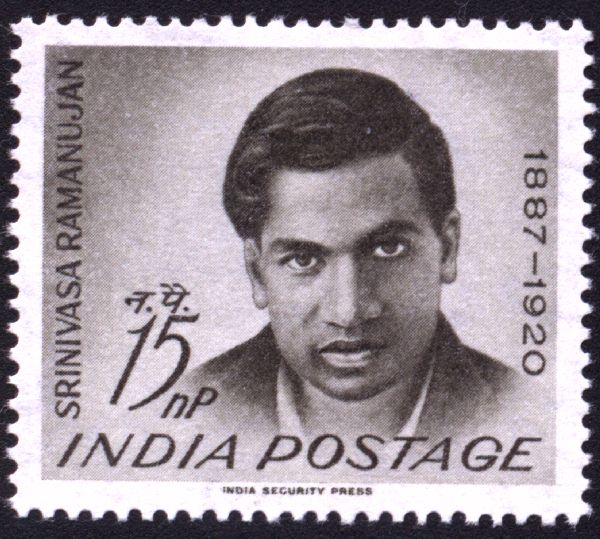[an error occurred while processing this directive] Srinivasa Ramanujan, 1887-1920
Some links to websites that discuss the life and work of Ramanujan.
-
"Ramanujan independently compiled nearly 3900 results (mostly
identities and equations) during his short lifetime. Although a
small number of these results were actually false and some were
already known, most of his claims have now been proven correct. He
stated results that were both original and highly unconventional, such
as the Ramanujan prime and the Ramanujan theta function, and these
have inspired a vast amount of further research. However, some of
his major discoveries have been rather slow to enter the mathematical
mainstream. Recently, Ramanujan's formulae have found applications in
crystallography and string theory. The Ramanujan Journal, an
international publication, was launched to publish work in all areas
of mathematics influenced by his work."
-
"Ramanujanís story is one of the great romantic tales of
mathematics. It is an account of triumph and tragedy, of a man of
genius who prevailed against incredible adversity and whose life was
cut short at the height of his powers. The extent of those powers is
only now being fully recognized. Ramanujan had the misfortune to work
on problems that, in his time, were considered a mathematical
backwater. Modular equations, theta function identities, even
continued fractions were viewed as having been played out in the
nineteenth century. One might pick up tidbits, but there was nothing
important left to be discovered.
"G.H. Hardy knew the error of this view. In his twelve lectures given
at Harvard in 1936, he communicated the range and depth of
Ramanujanís work."
Srinivasa Ramanujan Complete collection of his published papers and unpublished notebooks.
Ramanujan's
Notebooks Photographic copy of Ramanujan's first two
notebooks.
-
Srinivasa
Ramanujan by James R. Newman, chapter in the 4-volume anthology
The World of Mathematics (Google books) Includes Ramnanujan's
1913 letter to Hardy and some of the formuals in contained.
"I have had no university education but I have undergone the ordinary
school course. After leaving school I have been employing the spare
time at my disposal to work at mathematics. I have not trodden through
the conventional regular course which is followed in a university
course, but I am striking out a new path for myself. I have made a
special investigation of divergent series in general and the results I
get are termed by the local mathematicians as 'startling'."
-
"Ramanujan sailed from India on 17 March 1914. It was a calm voyage except for three days on which Ramanujan was seasick. He arrived in London on 14 April 1914 and was met by Neville. After four days in London they went to Cambridge and Ramanujan spent a couple of weeks in Neville's home before moving into rooms in Trinity College on 30th April. Right from the beginning, however, he had problems with his diet. The outbreak of World War I made obtaining special items of food harder and it was not long before Ramanujan had health problems.
"Right from the start Ramanujan's collaboration with Hardy led to important results."
Srinivasa
Ramanujan, biography by Mike Hoffman, a friend of mine at the U. S. Naval Academy.
"It is one of the most romantic stories in the history of mathematics:
in 1913, the English mathematician G. H. Hardy received a strange
letter from an unknown clerk in Madras, India. The ten-page letter
contained about 120 statements of theorems on infinite series,
improper integrals, continued fractions, and number theory (Here is a
.dvi file
with a sample of these results). Every prominent mathematician gets
letters from cranks, and at first glance Hardy no doubt put this
letter in that class. But something about the formulas made him take a
second look, and show it to his collaborator J. E. Littlewood. After a
few hours, they concluded that the results 'must be true because, if
they were not true, no one would have had the imagination to invent
them'. "
THE
RAMANUJAN JOURNAL The Ramanujan Journal will publish original
research papers of the highest quality in all areas of mathematics
influenced by Srinivasa Ramanujan. His remarkable discoveries have
made a great impact on several branches of mathematics, revealing deep
and fundamental connections.
Ramanujan:
Essay and Surveys edited by Bruce Berndt and Robert Rankin, 2001
(Google books)
The
Ramanujan Pages A collection of very accessible papers about
Ramanujan's work by Titus Piezas III (who is this guy?)
Sarah Zubairy,
'04, a UR Math graduate who wrote three papers on Ramanujan's work
while she was an undergraduate here.
[an error occurred while processing this directive]

